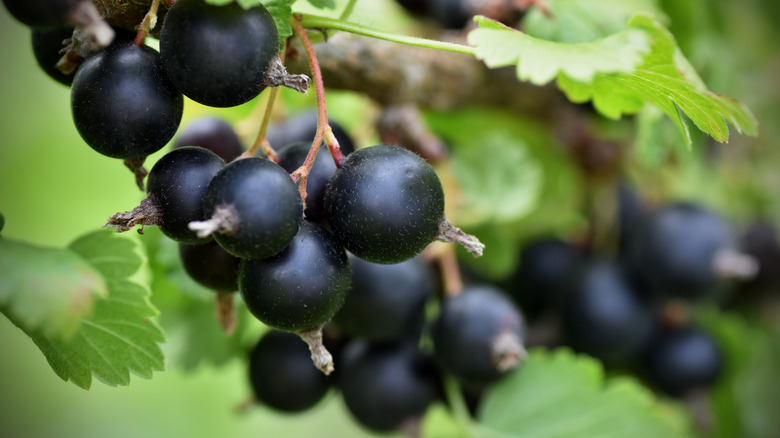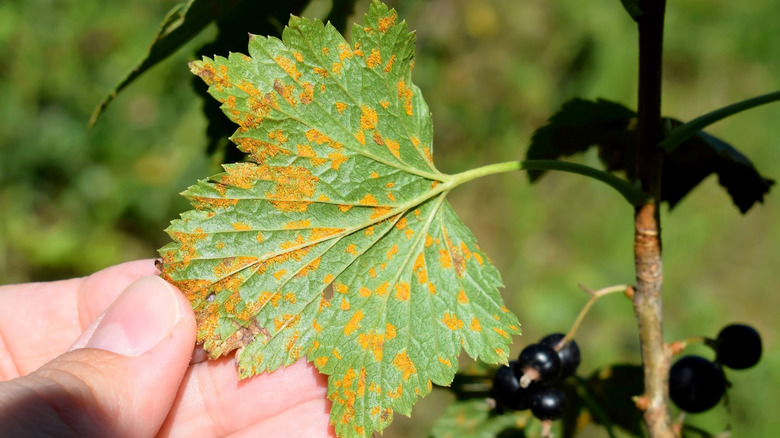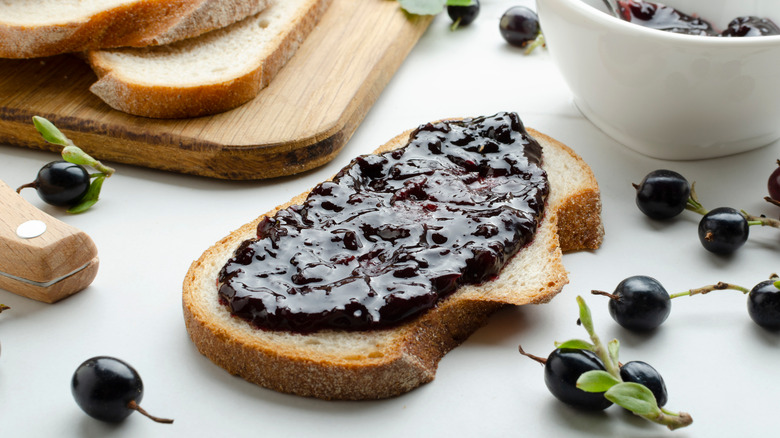Here's Why Blackcurrant Was Banned In The US For Over 50 Years
Blackcurrants are a fruit common in European pastries and teas, but many people in the U.S. may have never tasted one if they haven't traveled abroad. According to The European Business Review, it has been estimated that fewer than 0.1% of U.S. citizens have tasted a blackcurrant. In the same family as the gooseberry, blackcurrants look like grapes but taste more like a berry. There are also red currants and white currants — with all three currants falling under the Ribes genus. Altogether, 99% of Ribes are produced in Europe, per Business Insider.
Initially, when the British crossed the Atlantic Ocean and began farming in Colonial America, they farmed blackcurrants as well. Together, it is estimated that 7,400 acres of soil were allocated for farming Ribes in the late 1800s (via Business Insider). But the golden age of blackcurrants in the U.S. would be cut short because of its relationship with another plant: the white pine.
Blackcurrants versus timber
By the end of the 19th century, farmers noticed that blackcurrants had introduced an invasive species called blister fungus that killed white pine trees, per Business Insider. The fungus solely spreads through blackcurrants rather than from pine tree to pine tree. That means the U.S. was faced with a choice at the time: blackcurrants or the white pine. With national forests highly valued for the timber industry sales used to develop the U.S. as we know it, they chose to protect the white pine.
In the early 20th century, the U.S. government made it illegal to farm blackcurrants and put forth resources to eradicate all Ribes plants from the environment, according to Business Insider. Interestingly, European agriculture met this fungus long ago when it was introduced in blackcurrant plants, but they didn't rely on white pine as fiercely as the U.S., and the "white pine was sacrificed to retain the Ribes," according to "History of White Pine Blister Rust Control: A Personal Account."
Blackcurrants come back
After more than half a century, scientists discovered a new variant of blackcurrant that was resistant to the fungal disease that threatened the white pine. Without the threat to the timber industry, the U.S. government "left it up to the states to lift the ban" blackcurrants in 1966 (via Cornell University). It wasn't until 2003 when New York, where blackcurrants were most heavily produced in the late 19th century, became the first state to uplift the blackcurrant ban in the continental U.S. Since then, some other states like Connecticut and Vermont have also rescinded their bans. But neighboring Massachusetts and Maine (or "The Pine Tree" state) are some of the many other states in which such bans remain (per AHS Gardening, Mass.gov).
The so-called Streisand effect posits that banning books, foods, or other products inadvertently leads people to seek those products out more, according to Merriam-Webster. The blackcurrant — with its juicy flavor, antioxidant properties, and underground production means — could be the next example of the Streisand effect if it makes a comeback on U.S. soil (via The European Business Review).


